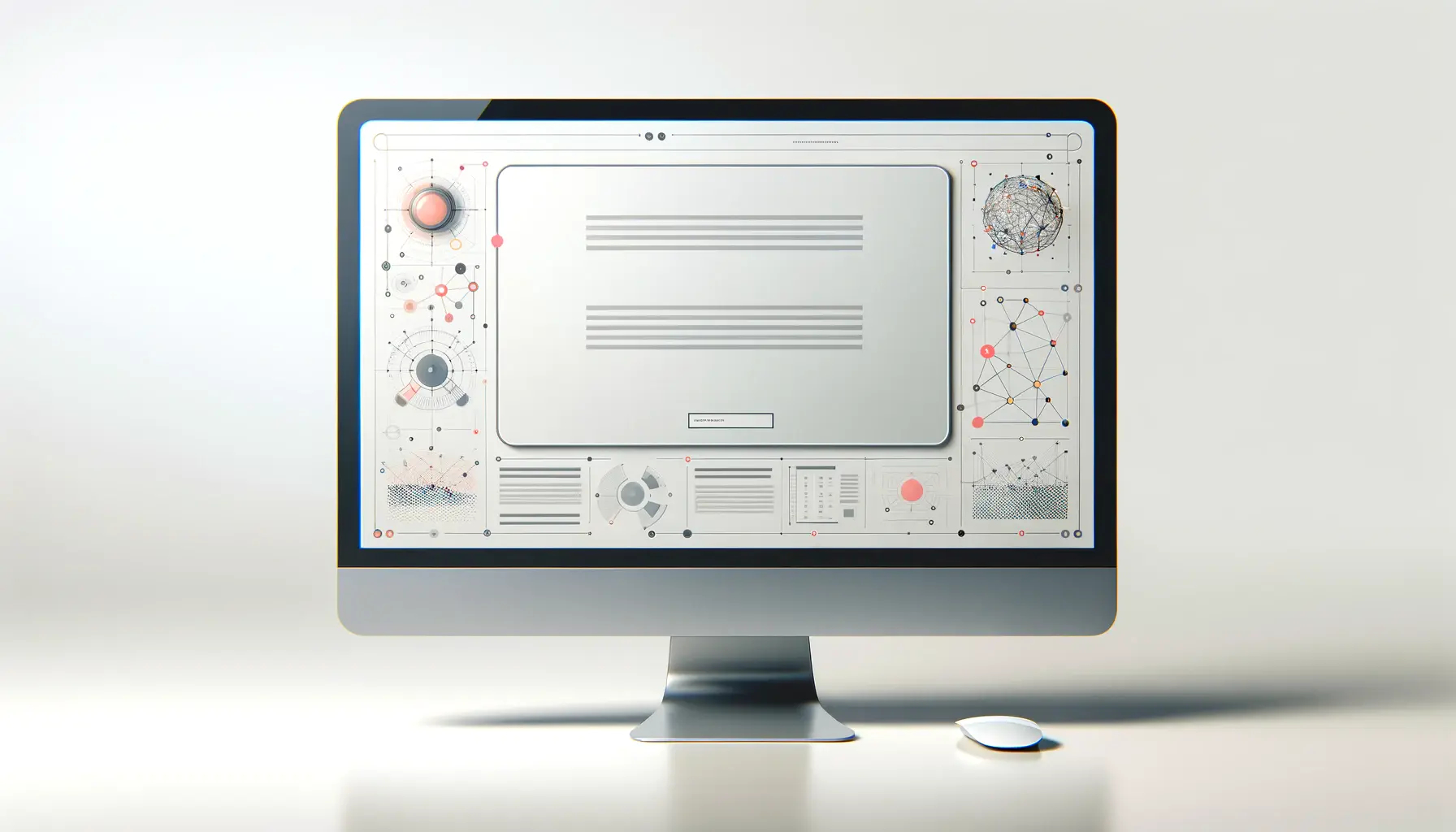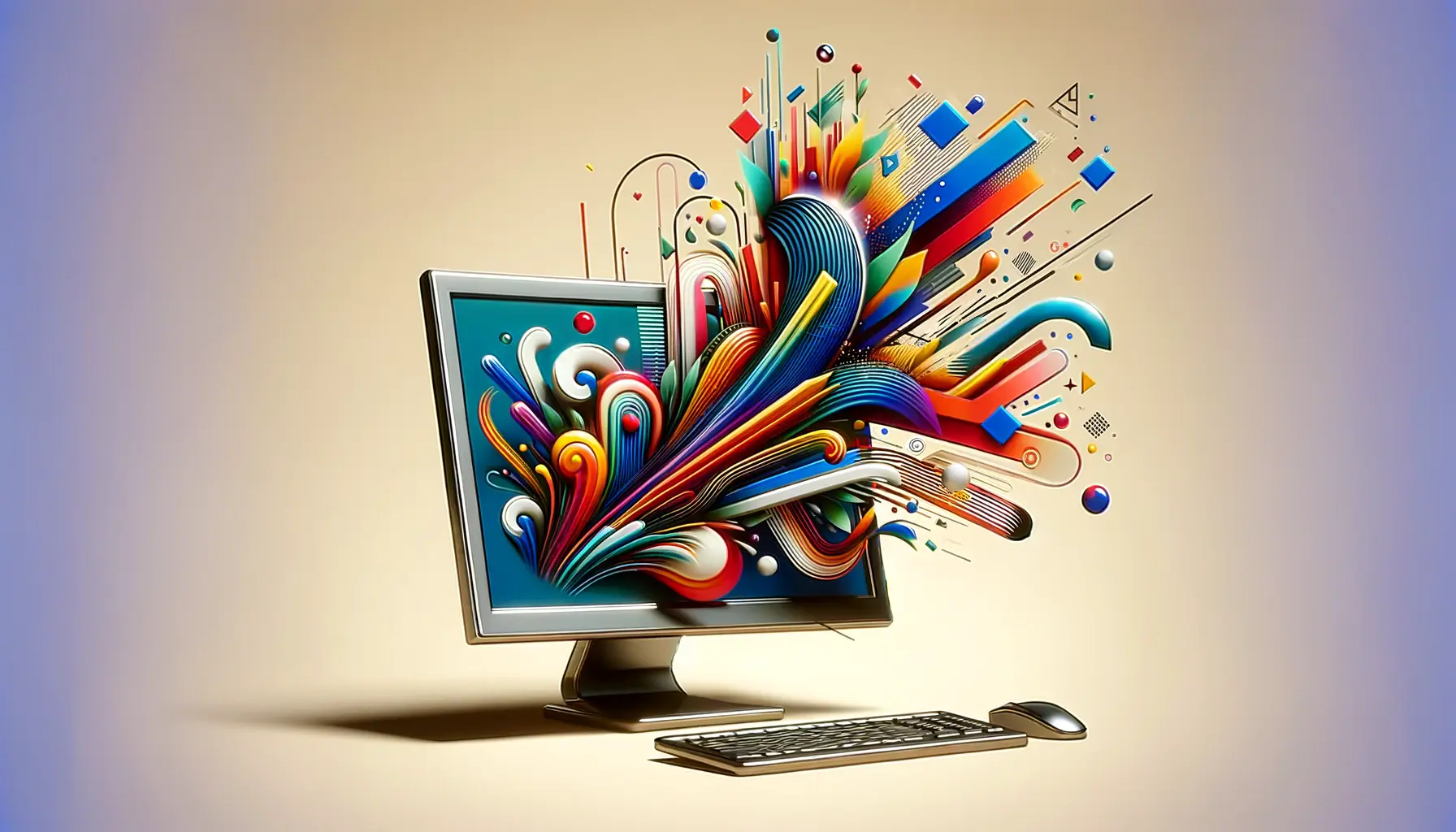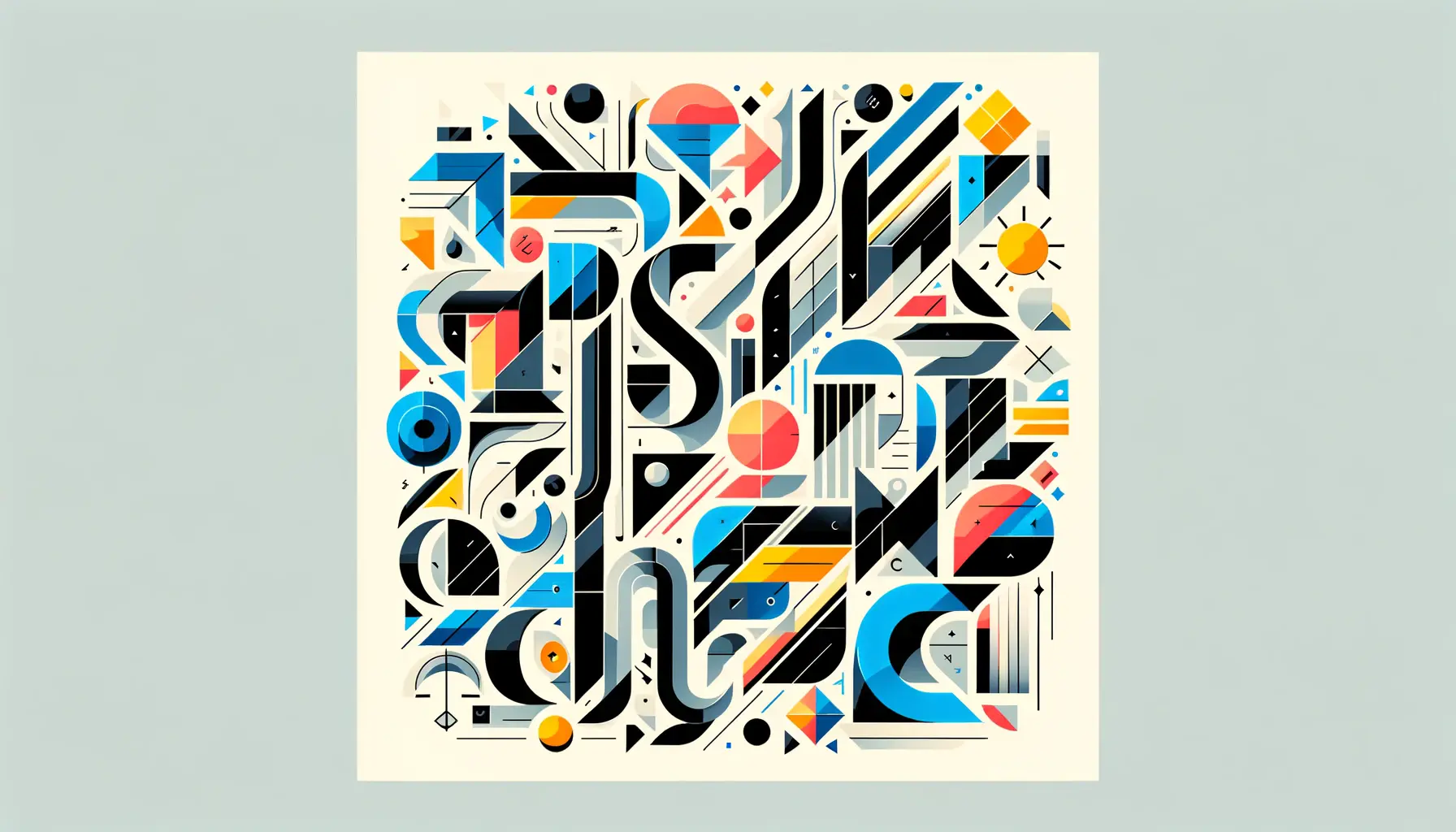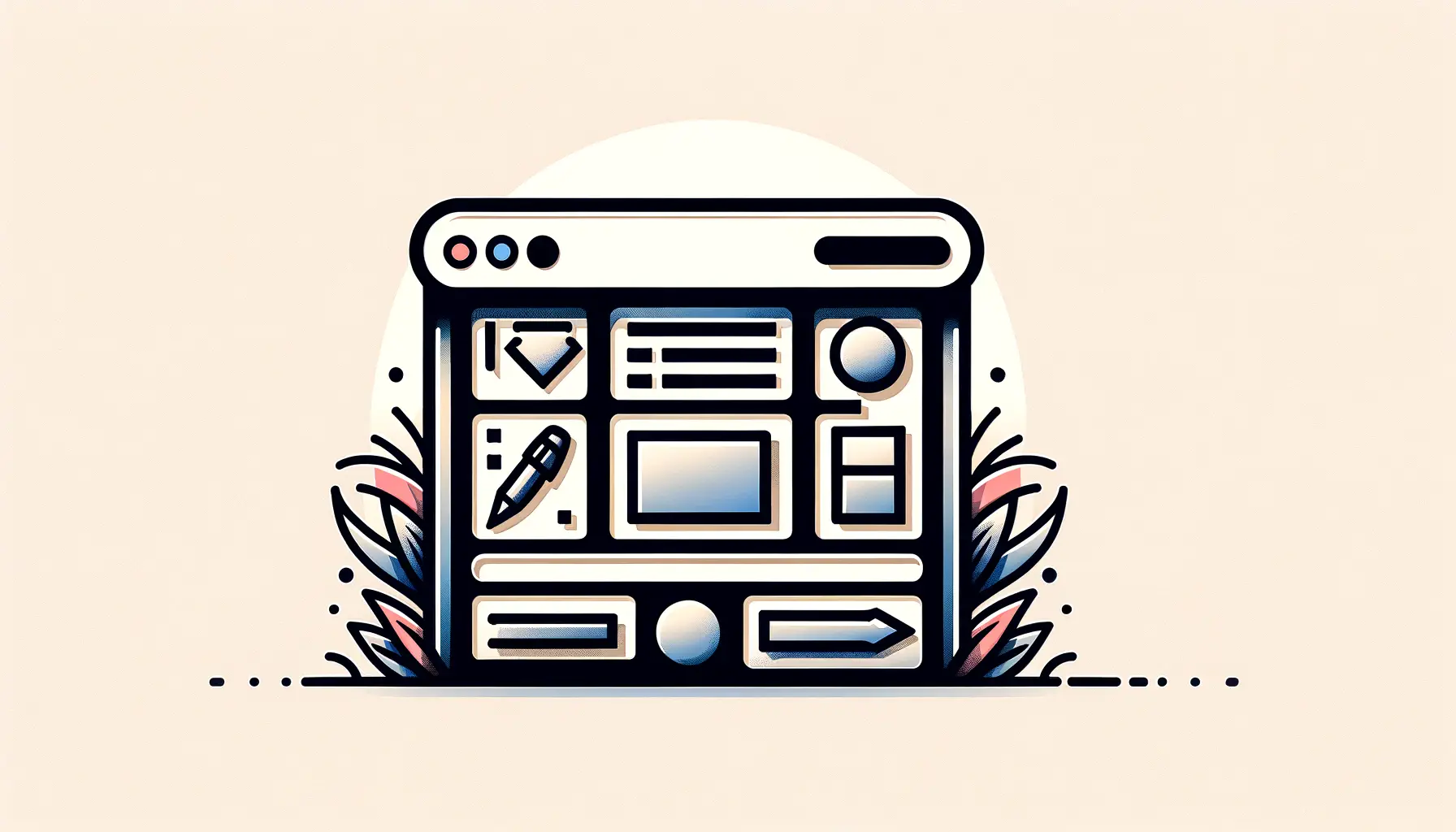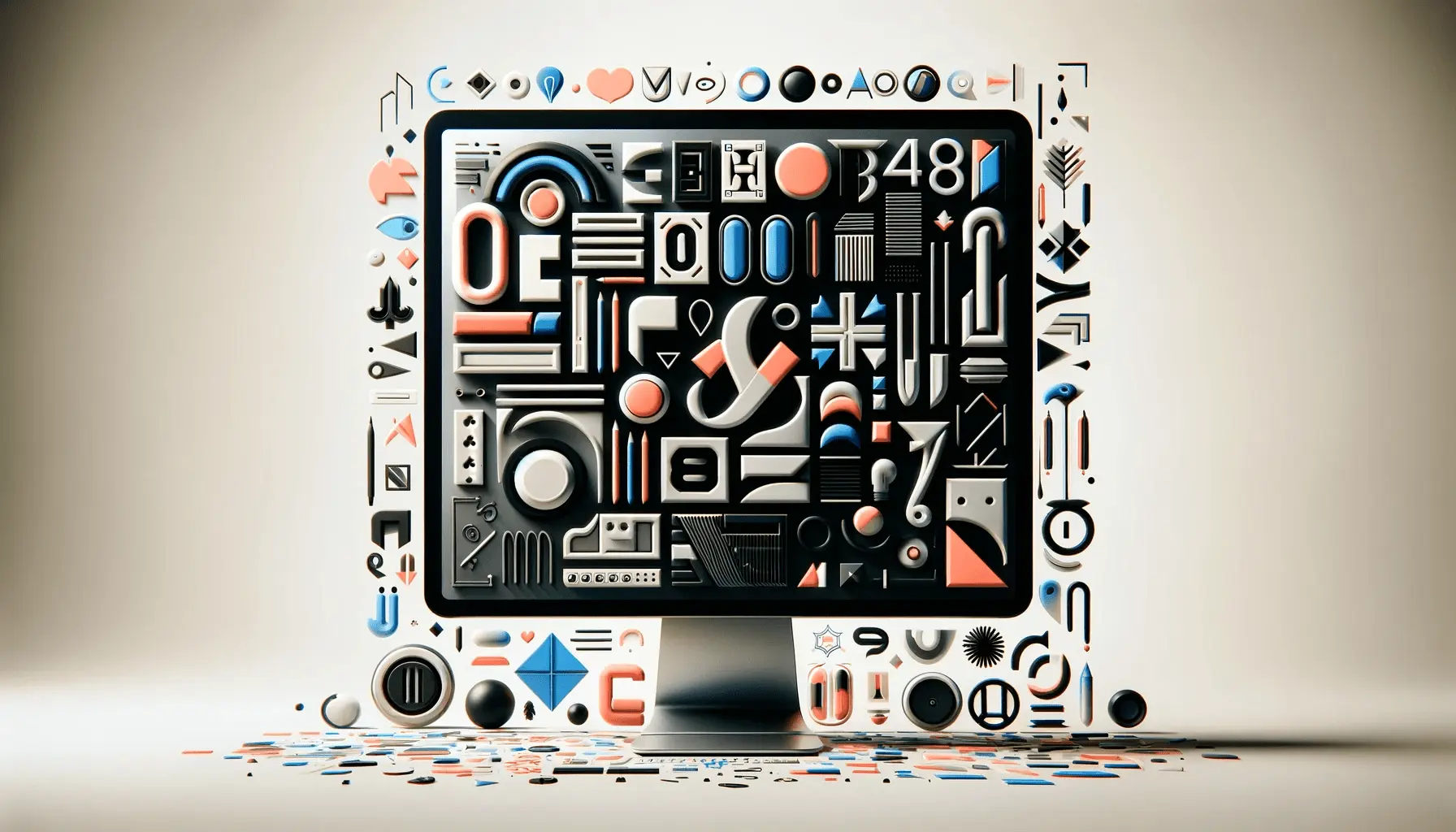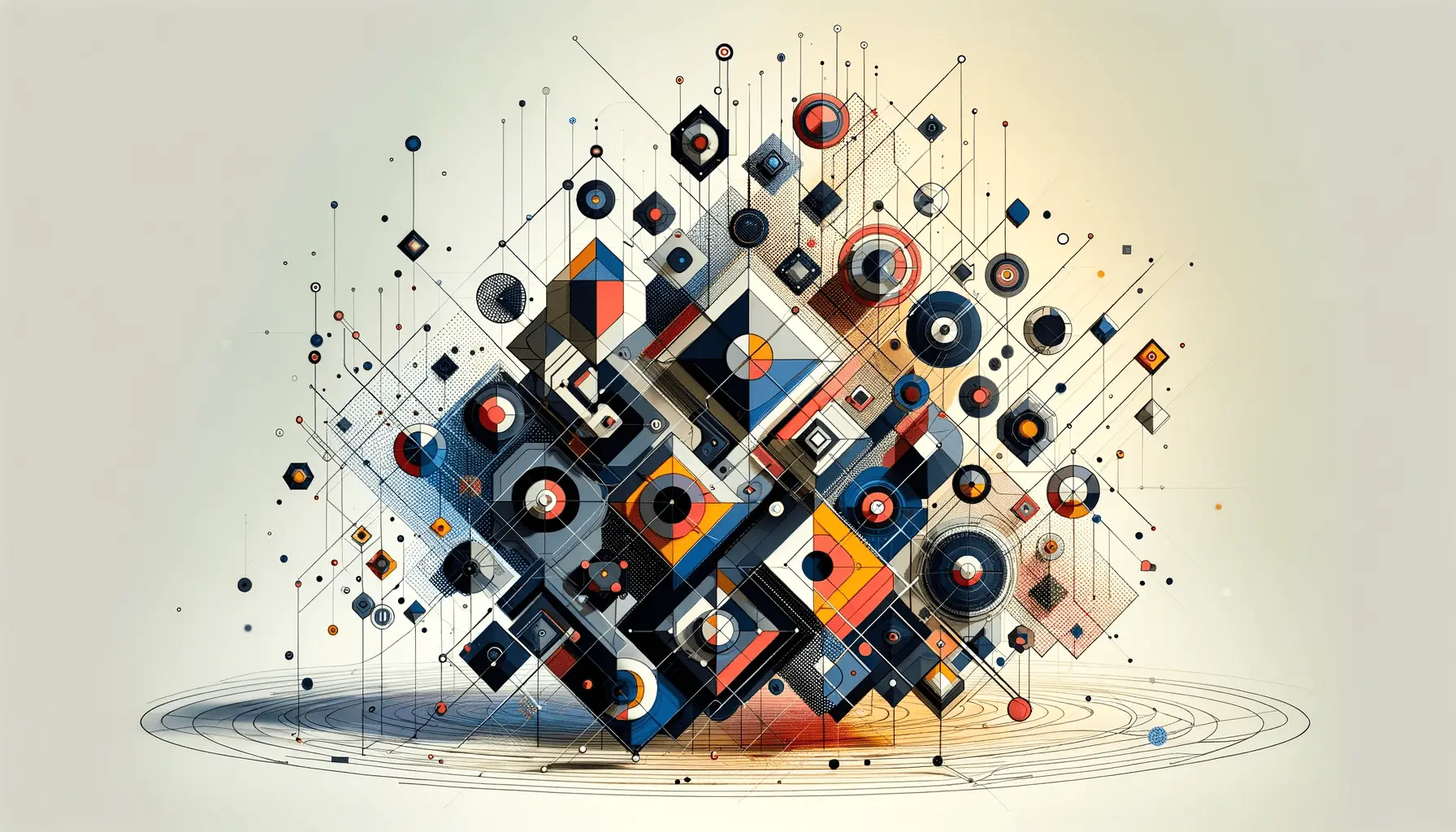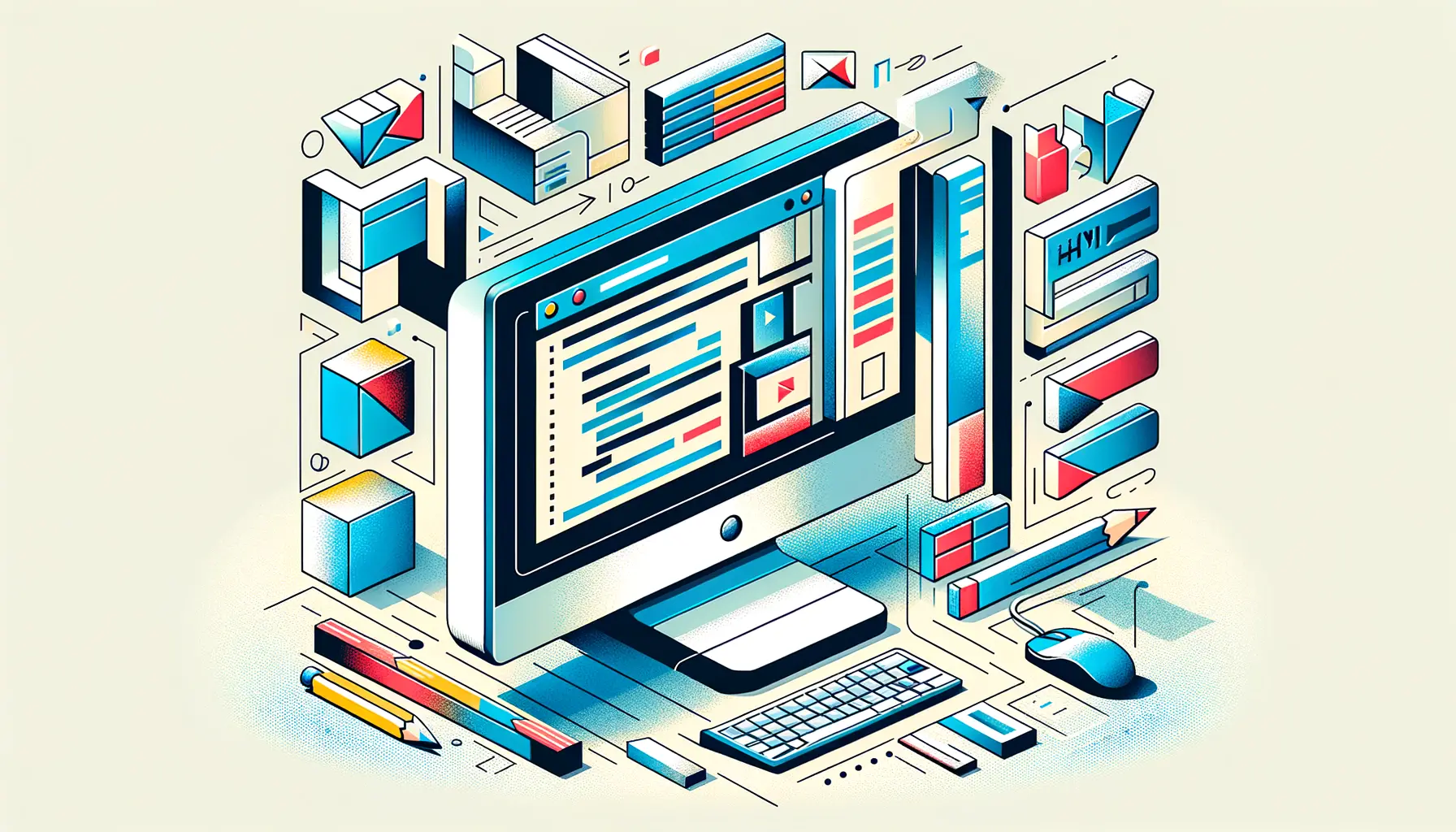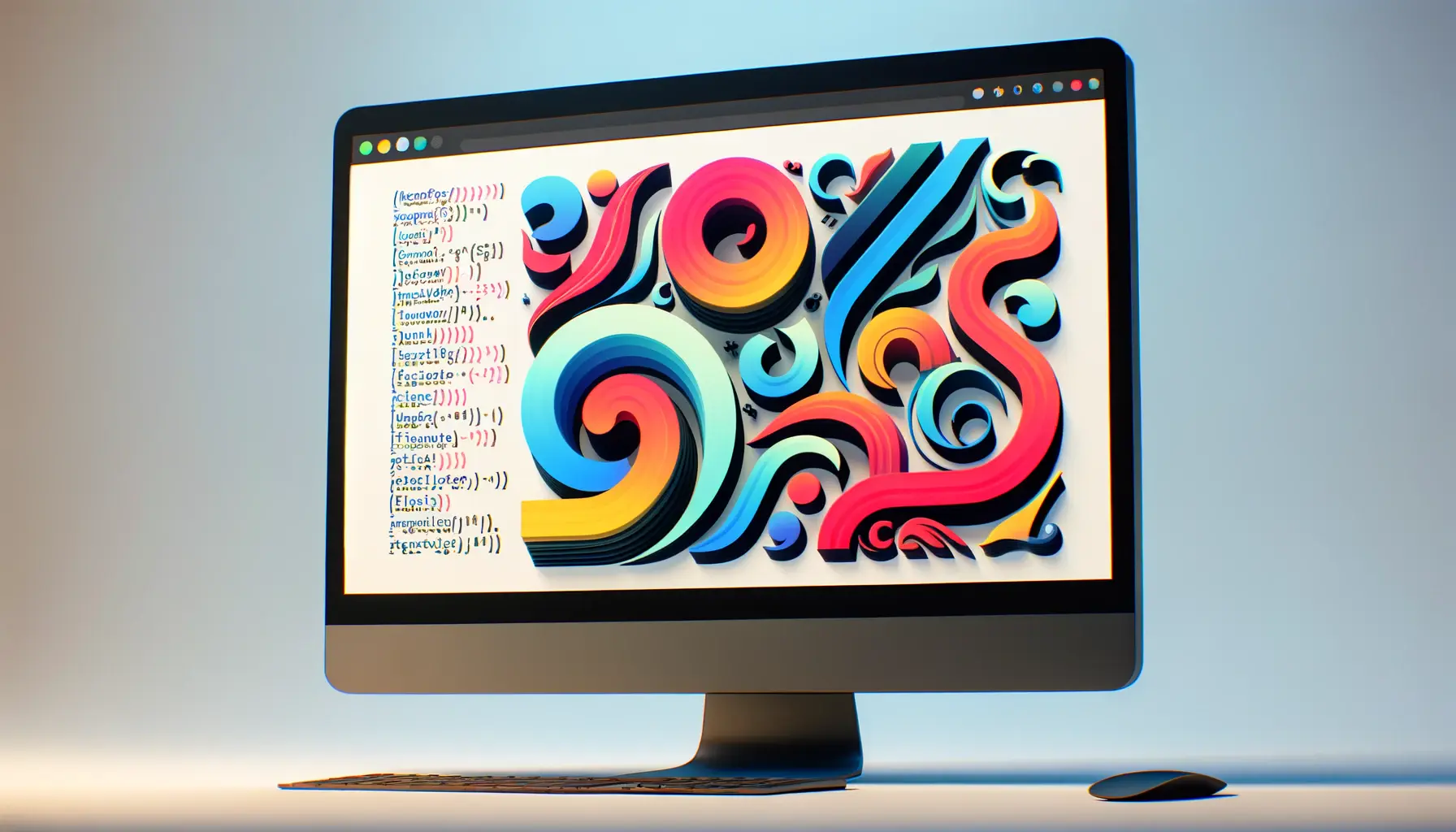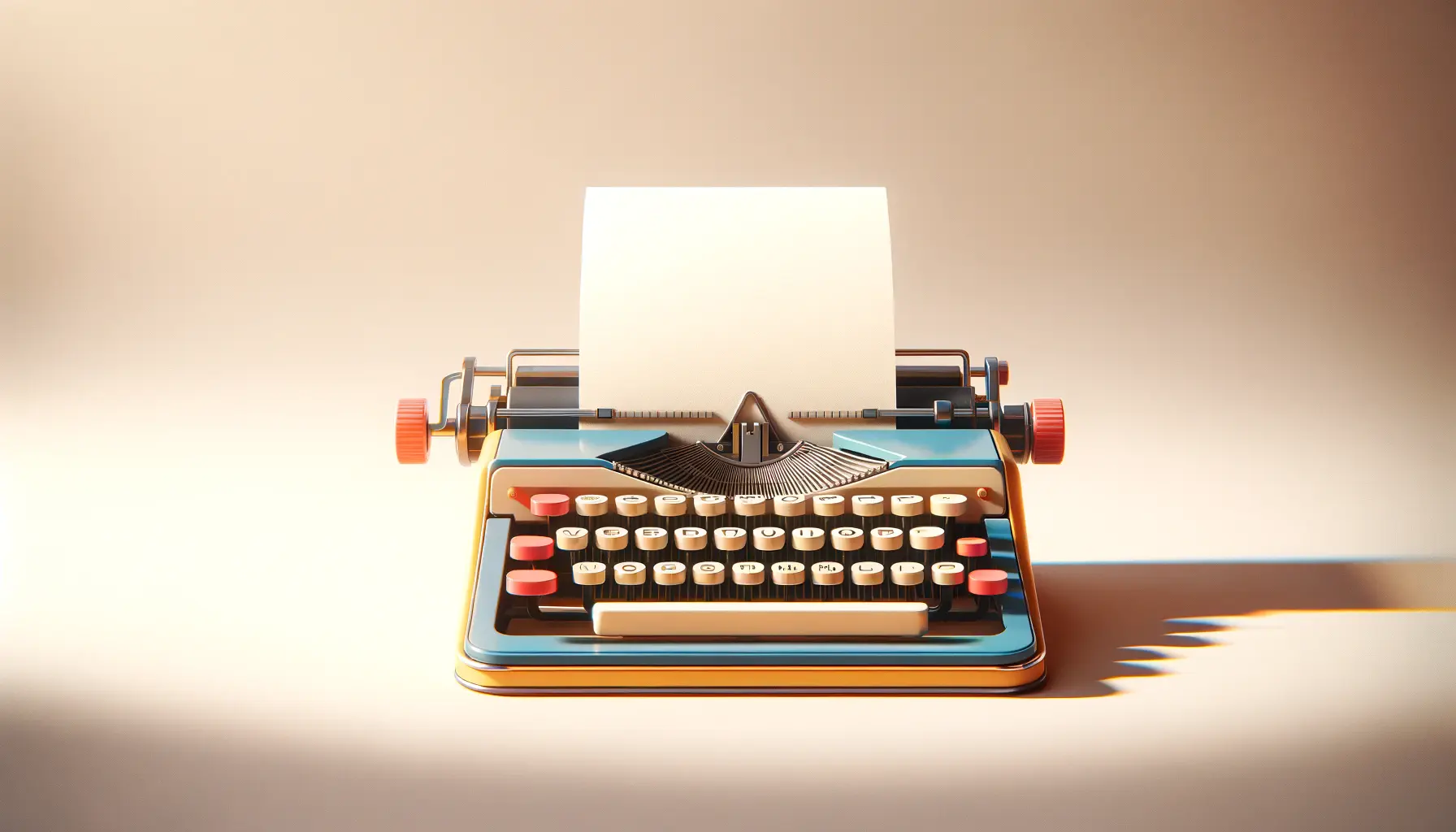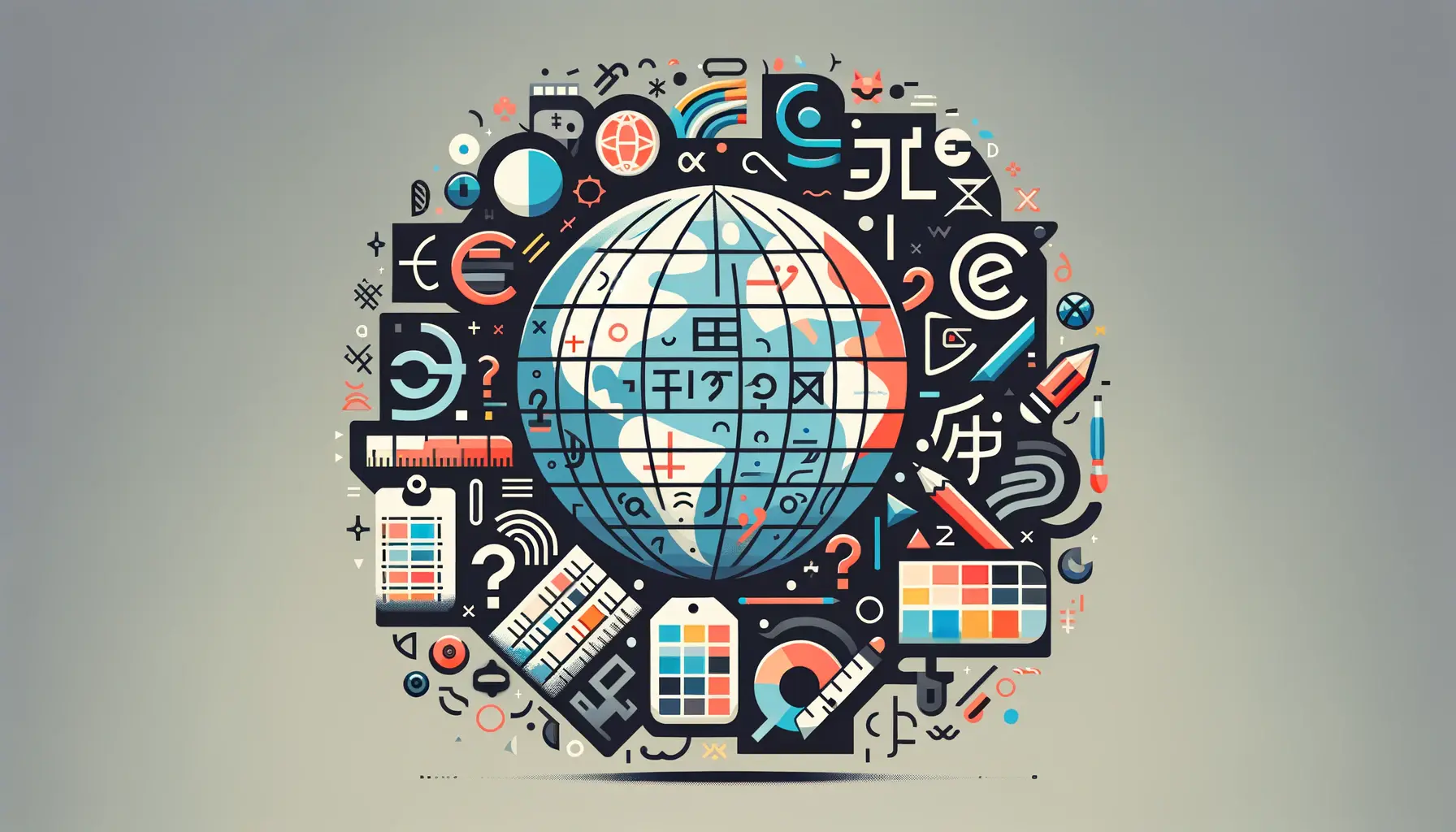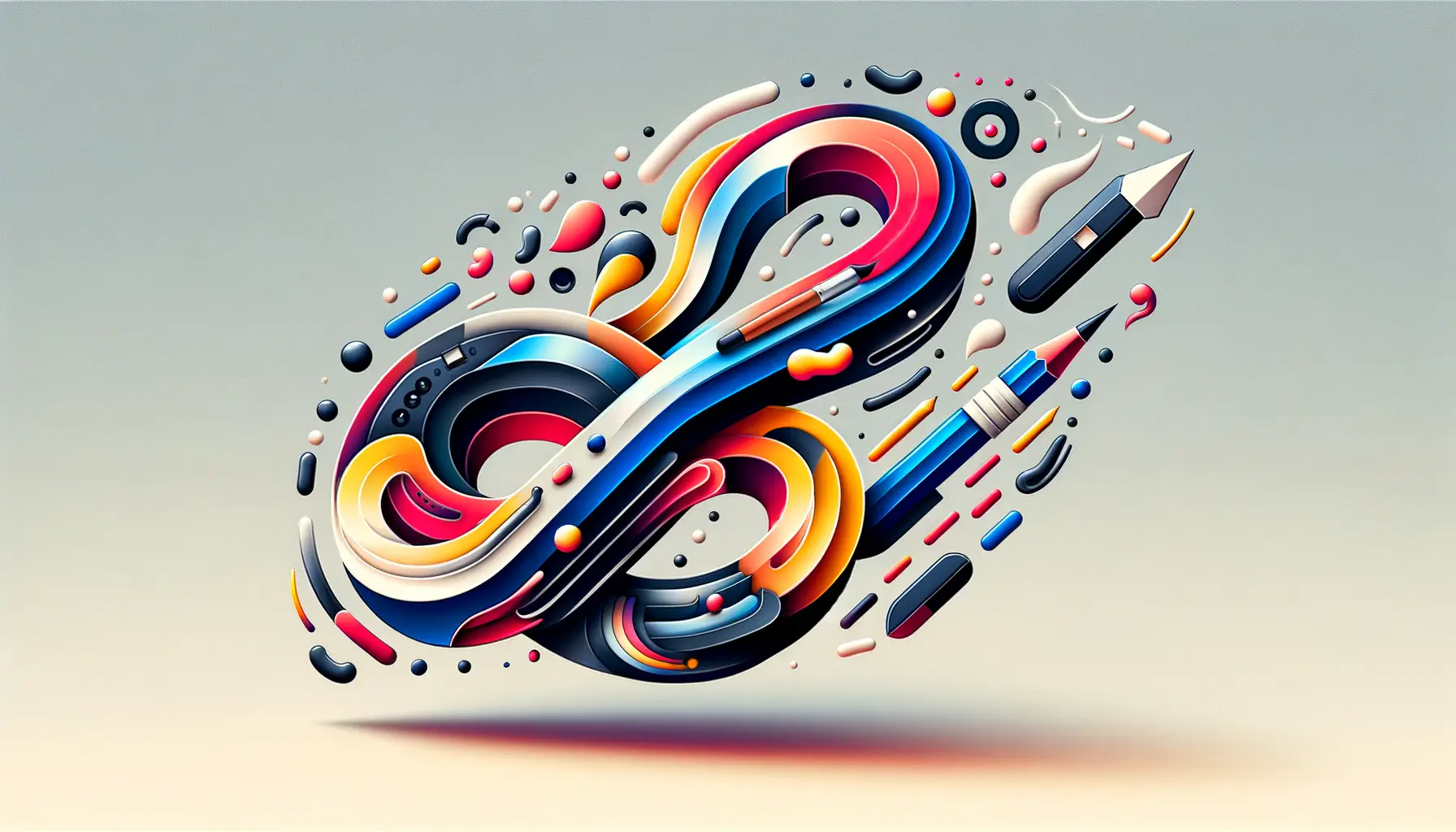The integration of Artificial Intelligence (AI) into the realms of typography and web design is not just a fleeting trend but a transformative movement that is reshaping the very fabric of how digital experiences are crafted and delivered.
As we stand on the brink of a new era, the fusion of AI with design principles heralds a future where creativity meets efficiency, leading to groundbreaking advancements in the way we interact with the digital world.
AI’s role in typography and web design extends beyond mere automation; it’s about augmenting the creative process, enabling designers to explore uncharted territories of innovation.
With AI’s ability to analyze vast datasets and understand complex patterns, it offers unprecedented opportunities for personalization, accessibility, and user engagement in web design.
This transformative technology is setting the stage for a future where digital experiences are more intuitive, engaging, and tailored to the individual needs of users.
- Exploring AI’s Impact on Typography
- AI’s Role in Streamlining Web Design Processes
- Optimizing Web Accessibility and Inclusivity with AI
- Empowering Creative Experimentation with AI
- Enhancing Real-time Collaboration in Design Teams
- AI’s Role in Sustainable Web Design Practices
- Future Trends: AI in Typography and Web Design
- Embracing the Future with AI in Typography and Web Design
- FAQs on The Future of AI in Typography and Web Design
Exploring AI’s Impact on Typography
Revolutionizing Font Design with AI
AI is redefining the boundaries of typography by enabling the creation of dynamic and responsive fonts that can adapt to various contexts and user preferences.
This not only enhances the aesthetic appeal of digital content but also improves readability across different devices and screen sizes.
By leveraging machine learning algorithms, designers can now generate custom fonts that are both unique and functional, pushing the limits of traditional typography.
Moreover, AI-driven typography tools are simplifying the process of font selection and pairing, making it easier for designers to create harmonious and visually appealing compositions.
This level of automation and intelligence in font design is not only saving valuable time but also ensuring that typographic choices are data-driven and optimized for the best user experience.
Personalizing User Experiences with Smart Typography
One of the most exciting prospects of AI in typography lies in its ability to personalize user experiences.
Imagine visiting a website that adjusts its typography based on your reading preferences or the context of your visit.
AI makes this possible by analyzing user data and behavior to dynamically adjust font sizes, styles, and layouts, thereby creating a more personalized and engaging experience for each user.
This level of personalization is not just about aesthetics; it’s about enhancing usability and accessibility.
For instance, AI can automatically modify the typography of a website for users with visual impairments, ensuring that the content is accessible to everyone.
This approach to smart typography is a testament to how AI is making the web a more inclusive space.
AI’s integration into typography is revolutionizing the way we think about font design, making it more adaptive, personalized, and inclusive.
AI’s Role in Streamlining Web Design Processes
The advent of AI in web design is not just transforming the aesthetic aspects but also revolutionizing the entire design process.
By automating routine tasks, AI allows designers to focus on more creative and strategic elements of web design.
This shift towards AI-driven design processes is enabling faster project completion times, higher quality outcomes, and more innovative solutions to complex design challenges.
AI-powered tools and platforms are at the forefront of this transformation, offering a range of functionalities from automated layout creation to real-time user behavior analysis.
These tools are not only enhancing the efficiency of web design workflows but also enabling a more data-driven approach to design decision-making.
Automating Layout and Color Scheme Selection
- One of the most time-consuming aspects of web design is creating layouts and selecting color schemes that align with a brand’s identity while also ensuring a positive user experience. AI is simplifying this process through algorithms that can generate multiple layout and color scheme options based on predefined criteria, significantly reducing the time and effort required from designers.
- These AI-driven tools analyze current design trends, brand guidelines, and user preferences to suggest layouts and color combinations that are both aesthetically pleasing and effective in achieving the desired user engagement. This not only speeds up the design process but also ensures that the final designs are optimized for user satisfaction.
Enhancing User Experience with Predictive Design
- AI’s ability to predict user behavior and preferences is a game-changer for web design. By analyzing vast amounts of user data, AI can identify patterns and trends that inform design decisions, leading to more intuitive and user-friendly websites.
- This predictive design approach allows for the creation of websites that not only look great but also provide a seamless user experience. From predicting the most effective placement of call-to-action buttons to optimizing navigation paths for enhanced usability, AI is making web design more intelligent and user-centric.
The integration of AI into web design processes is enabling a shift towards more automated, efficient, and user-focused design practices.
Optimizing Web Accessibility and Inclusivity with AI
As the digital world becomes increasingly central to our daily lives, ensuring that websites are accessible and inclusive to all users has never been more important.
AI is playing a crucial role in this aspect of web design, offering innovative solutions to improve web accessibility and promote inclusivity.
By leveraging AI, designers can create websites that are not only visually appealing but also universally accessible, breaking down barriers for users with disabilities.
AI-driven accessibility tools are transforming the way websites are designed, making it easier to adhere to web accessibility standards and guidelines.
These tools can automatically identify and fix common accessibility issues, such as insufficient contrast or missing alt text, ensuring that websites are navigable and usable for people with a wide range of disabilities.
Automated Accessibility Audits
- AI technologies can perform comprehensive accessibility audits on websites, identifying areas that do not meet accessibility standards. This includes detecting issues related to color contrast, font sizes, and interactive elements that may pose challenges for users with visual, auditory, or motor impairments.
- By automating the audit process, AI significantly reduces the time and resources required to ensure a website is fully accessible. This allows web designers and developers to focus on implementing the necessary changes to make their websites more inclusive.
Dynamic Content Adaptation
- AI goes beyond identifying accessibility issues by also providing solutions for dynamic content adaptation. This means that websites can automatically adjust their presentation and interaction modes to suit the needs of individual users, such as offering a text-to-speech option for users with visual impairments or simplifying navigation for users with motor difficulties.
- This level of personalization ensures that all users, regardless of their abilities, can enjoy a seamless and engaging online experience. It represents a significant step forward in making the web a more inclusive space for everyone.
Leveraging AI to enhance web accessibility and inclusivity is not just about compliance with standards; it’s about creating a more equitable digital world where everyone has equal access to information and services.
Empowering Creative Experimentation with AI
The fusion of AI with web design and typography is not only about enhancing efficiency and accessibility; it’s also opening new avenues for creative experimentation.
AI’s capacity to process and generate vast amounts of data at incredible speeds allows designers to push the boundaries of creativity, experimenting with novel design concepts that were previously unimaginable.
Through the use of AI, designers can explore a wider range of design possibilities, testing out different aesthetics and layouts quickly and easily.
This rapid experimentation process enables the discovery of unique and innovative design solutions, enriching the visual and interactive landscape of the web.
Generative Design and Aesthetic Exploration
- AI’s generative capabilities are a boon for designers seeking to explore new aesthetic territories. By inputting certain parameters, designers can use AI to generate a variety of design elements, from intricate patterns to complex layouts, each with its own unique flair.
- This process not only accelerates the exploration of different visual styles but also inspires designers by presenting them with options they might not have considered. The result is a more diverse and vibrant digital environment that challenges conventional design norms.
Interactive and Dynamic Web Elements
- AI is also revolutionizing the way web elements interact with users. By incorporating AI-driven animations and interactions, designers can create web pages that respond to user behavior in real-time, offering a more engaging and immersive experience.
- From dynamic typography that changes based on user interaction to animated backgrounds that adapt to the time of day, AI enables the creation of web elements that are not only visually captivating but also deeply personalized.
AI empowers designers to transcend traditional design limitations, fostering a culture of innovation and experimentation that enriches the web with new forms of expression and engagement.
Enhancing Real-time Collaboration in Design Teams
The impact of AI on typography and web design extends into the realm of team collaboration and project management.
With AI’s advanced analytical and predictive capabilities, design teams can achieve unprecedented levels of synchronization and efficiency.
This technology facilitates real-time collaboration, enabling teams to work together seamlessly, regardless of their physical location.
AI-driven platforms and tools are redefining the collaborative process, offering features such as automated version control, real-time feedback, and predictive design adjustments.
These innovations ensure that team members are always on the same page, streamlining the design process and reducing the likelihood of miscommunication or errors.
Streamlining Design Feedback and Revisions
- AI tools can automatically track changes and suggestions, making it easier for team members to review and implement feedback. This reduces the time spent on revisions and allows for a more dynamic and responsive design process.
- Moreover, AI can analyze feedback from multiple team members to identify common themes or conflicting suggestions, guiding the team towards consensus and ensuring that the final design aligns with everyone’s vision.
Predictive Project Management
- AI’s predictive capabilities extend to project management, where it can forecast project timelines, identify potential bottlenecks, and suggest optimizations to keep the project on track. This allows teams to proactively address issues before they become obstacles, ensuring smoother project execution.
- By leveraging AI for project management, design teams can allocate their resources more effectively, prioritize tasks based on AI-generated insights, and achieve better outcomes in shorter timeframes.
AI is not just transforming the way we design; it’s revolutionizing the way design teams collaborate, enhancing creativity, efficiency, and project success.
AI’s Role in Sustainable Web Design Practices
In an era where digital consumption is at an all-time high, the environmental impact of web design cannot be overlooked.
AI is emerging as a key player in promoting sustainable web design practices, helping to minimize the digital carbon footprint while maintaining high-quality user experiences.
By optimizing website efficiency and reducing unnecessary data usage, AI contributes to more eco-friendly web solutions.
Through intelligent algorithms, AI can streamline website code, optimize images for faster loading times without compromising quality, and ensure that websites are using resources as efficiently as possible.
These optimizations not only enhance the user experience by reducing load times but also contribute to lower energy consumption associated with web hosting and data transfer.
Optimizing Resource Utilization
- AI-driven tools can analyze a website’s resource usage in real-time, identifying areas where optimizations can lead to significant energy savings. This includes simplifying complex scripts, compressing images and videos, and eliminating redundant data requests.
- Such optimizations ensure that websites are leaner, load faster, and require less energy to operate, aligning web design practices with sustainability goals.
Automated Green Coding Practices
- AI is also paving the way for automated green coding practices. By identifying and suggesting more efficient coding techniques, AI helps developers write cleaner, more sustainable code.
- This not only improves website performance but also ensures that digital products are designed with environmental considerations in mind, promoting a greener future for the web.
The misconception that high-quality web design and sustainability cannot coexist is being debunked by AI, which offers solutions that enhance both design quality and environmental responsibility.
Future Trends: AI in Typography and Web Design
The intersection of AI with typography and web design is continuously evolving, with new trends emerging that promise to further revolutionize these fields.
As we look to the future, it’s clear that AI will play an even more integral role in shaping digital experiences, driving innovation, and setting new standards for design excellence.
Emerging technologies and AI advancements are set to introduce novel design methodologies, automate complex processes, and foster a deeper understanding of user behavior.
These developments will not only enhance the aesthetic and functional aspects of web design but also redefine the role of designers in the creative process.
AI-driven Dynamic Typography
- The future of typography lies in AI-driven dynamic systems that can adapt typography in real-time based on context, user behavior, or even emotional responses. This will enable a level of personalization and engagement previously unattainable, making digital content more accessible and resonant with diverse audiences.
- Such systems will leverage natural language processing and sentiment analysis to adjust typographic elements dynamically, ensuring that the textual content is not only visually appealing but also contextually relevant and emotionally engaging.
Intelligent Design Assistants
- AI will evolve to become an intelligent design assistant, offering real-time suggestions, automating routine tasks, and facilitating a more intuitive design process. These AI assistants will be capable of understanding design briefs, generating initial concepts, and providing actionable feedback to refine designs.
- By working alongside human designers, AI assistants will enhance creativity, reduce time-to-market for new designs, and enable designers to focus on higher-level creative challenges.
Enhanced User Experience Through Predictive Analytics
- Predictive analytics powered by AI will play a crucial role in enhancing user experiences on the web. By analyzing user data in real-time, AI can predict user needs and preferences, enabling websites to offer personalized experiences that anticipate user actions and preferences.
- This level of predictive personalization will not only improve user satisfaction but also drive engagement and conversion rates, making websites more effective in achieving their business objectives.
Embracing the Future with AI in Typography and Web Design
The journey of integrating AI into typography and web design is an ongoing adventure that promises to reshape our digital landscapes in profound ways.
As we have explored, the fusion of AI with these creative fields is not merely about automating tasks but enhancing the creative process, making designs more personalized, accessible, and engaging.
The future of AI in typography and web design is bright, filled with possibilities that were once deemed futuristic but are now within our grasp.
The Transformative Power of AI
AI’s role in typography and web design extends beyond the boundaries of efficiency and automation.
It’s about creating a synergy between human creativity and machine intelligence, where each complements the other to produce outcomes that are innovative, user-centric, and impactful.
The transformative power of AI lies in its ability to learn from data, predict user preferences, and generate designs that push the envelope of creativity.
Key Takeaways for Designers and Developers
- AI-driven tools and platforms are revolutionizing the way we approach typography and web design, making it possible to create more personalized and engaging digital experiences.
- The integration of AI into design processes enhances creativity, allowing for a higher degree of experimentation and innovation.
- AI’s predictive analytics and real-time adaptation capabilities are setting new standards for user experience, making websites more intuitive and responsive to user needs.
- Sustainable web design practices powered by AI are paving the way for a more environmentally responsible digital future.
- The future trends in AI, such as dynamic typography and intelligent design assistants, highlight the ongoing evolution of AI’s role in design and the endless possibilities it presents.
In conclusion, the future of AI in typography and web design is not just an exploration of technology’s potential but a testament to the collaborative power of human and machine intelligence.
As designers and developers, embracing AI means opening up to a world of innovation where the only limit is our imagination.
The journey ahead is filled with challenges, but the rewards of creating more meaningful, accessible, and engaging digital experiences are immense.
Let us move forward with curiosity, creativity, and an open mind, ready to shape the future of the digital world together.
Quality web design is key for a great website! Check out our service page to partner with an expert web design agency.
FAQs on The Future of AI in Typography and Web Design
Explore common inquiries about the integration of AI in the fields of typography and web design.
AI is revolutionizing typography by enabling the creation of adaptive and responsive fonts, automating font selection, and personalizing user experiences.
While AI can automate many aspects of web design, human creativity and oversight are essential for nuanced, brand-aligned, and user-focused outcomes.
AI enhances web design through efficiency in layout creation, personalized user experiences, and predictive analytics for improved usability and engagement.
No, AI is intended to augment human designers, automating routine tasks and enabling designers to focus on more complex and creative aspects.
AI promotes sustainable web design by optimizing resource utilization, reducing digital carbon footprint, and encouraging green coding practices.
AI improves web accessibility by automating audits, identifying and fixing compliance issues, and adapting content for diverse user needs.
Yes, AI can analyze vast datasets to identify emerging trends, helping designers stay ahead with innovative and relevant design solutions.
AI will drive innovation in web design and typography, leading to more personalized, accessible, and engaging digital experiences.
